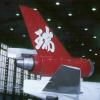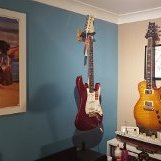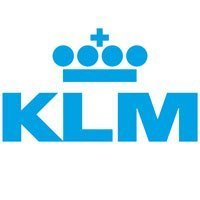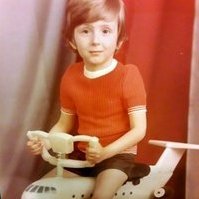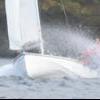Search the Community
Showing results for tags 'Airbus'.
-
Thanks Pin 👍 NEMO72 (new to me) is working on a limited edition 1/72nd Airbus A320Neo injected kit Source: http://scalemodels.ru/modules/forum/viewtopic.php?t=84352 3D renders V.P.
- 30 replies
-
- 10
-

-
Hi all, This is my second attempt of building civilian aircraft and I am still learning many techniques. My first one was a same kit, but done in Lufthansa livery. Knowing these kits have a small number of parts, I thought it would be a quick build, but I was dead wrong. Never knew how complex it could be dealing w/ painting... And I found out people basically block out all of the windows and that is exactly what I have done here. The build is straight forward, but I found out that there are many after market decals, so I used Draw decals for Swiss logos and also used Pas decals for windows. I gave multiple coats of clear with Gunze Super Clear III. It gave some incredible shine in the beginning, but now after some weeks, it is starting to lose shine. The reason is pretty simple, the thinner getting evaporated, and the clear coat shrinking caused the shine to diminish a bit. I should know this, coming from building autos... Next time, I would like to try something different to prevent that. I used to build everything when I was young, but I have been strictly building autos for many years. Then the hobby got away from me for awhile and now I am picking things up again. As I tried to learn new things and re-learn the know-hows, I must admit that this is definitely a hobby that needs dedication and patience. Unfortunately, this is probably why this industry isn't picking up with young kids, I don't see how this hobby can compete against something such as playing video games. 😉 Having said that, my respect to you all, we are not easy and we know how to pursue what we like for a long time! Steve
- 12 replies
-
- 34
-

-

-
In 2020 2021 is to release a new tool 1/144th Airbus A320Neo kit - ref. 7037 Source: https://vk.com/doc-29859496_526077927 V.P.
-
Hallo After watching some videos on YouTube of the Flight Channel, I watched two types of aircraft manufacturers. Airbus & Boeing. For my interest were all videos, which showed flights without physical damage as fire or collision with another aircraft. Some clues out of it. To my perception there is a pattern of incidences which dominate: · Unclear reading of instruments, because of similar showing two different meanings · Unclear maintenance instruction, without giving proper reasoning for doing so · In electronic circuits: Putting some algorithm behind to detect not reliable inputs with a certain logic, which is absolute absurd! · Not limiting input amplitudes, so they can overstress the aircraft and result in a fatal crash. · Unspecified minimum distance of an aircraft before haven taken off to avoid wake turbulence. · In some other cases: To install a unit preventing the aircraft from motion until all instruments are up! · On the other hand it showed, that flying skills in stall situations are at low level. Private aerobatics could improve this deficit. If an aircraft type is about 20 years in the operative field, many of this flaws are corrected. Not all of course. Some automatisms are contradicting itself. Automatic voices vs. real air controller! Who is the source to follow! Or thinking about a check system, if all external probes are working properly! Not damaged, hole free of foreign objects or water or ice! Happy modelling
-
I personally still dont like the look of the A350,esp. the nose section is imho one of the ugliest designs ever. But as I had flown on the CX A350-1000 back in 2019,it had to be added to my "I flew on it" collection. But I must admit,the flights were great on it,being not only very comfortable but also very quiet. The landings were so smooth,I didnt even notice the touchdowns.In these aspects,the A350 ranks among the best flying experiences of me,although they cant compare to the 747 flights,but as far as its Airbus related,the A350 was the best. The kit comes from Zvezda,and as one comes to expect from this manufacturer,the model is superbly designed and every part fits almost seamlessly. Puttying and sanding were almost inexistent with just the very long fuselage needed a little bit of filler in some places. The rest is basically falling together. It also has a nice and for that scale sufficiently detailed cockpit which can be seen through the very clear windscreen. The engines are very detailed and cleverly designed,which allows to paint the hot sections and the cowlings separately. Paints are Gunze white primer for the fuselage,clear coated with Gunze Premium gloss and Gunze Grey 315 for the wings and stabilizers. The cheatline was more difficult to find the right shade. On my research I came across Lifecolor WW2 Australian Airforce grey,but that was not available in my place.The only other option that was stated to be similar was the Gunze blue-grey,but in my opinion its a bit too much on the green side. I only realized it after I had sprayed the white around it.But depending on the light and angle you look at the model it differs a lot.I am still satisfied with the outcome. The decals are from PAS Decals and are nicely printed and easy to use. The windowframes for the cabin windows although are not usable as they are just thin black frames instead of silver. To solve this,I used the ones from the kits superb decal sheet and some from a 26decals Qatar A350-900 sheet that I had in my spares. All in all,a very nice and trublefree build all around and a highly recommended kit. Cheers Alex The stand provided presents the A350 nicely and so it can also be build with gear up. Here with "something else" to show the sheer size of that aircraft
- 20 replies
-
- 33
-

-

-
After 9 months or so and a few stops and starts I've finally completed my second 1/144 airliner. The first being the lovely British Airways A319 which can be found on this forum. The WIP can be found here: This is Revells new A321neo kit which has been converted to the long range version. Nothing special required for this except for filling a door frame or two and a slight change to the panel lines. The kit went together fairly well. The only real issue was a slightly poor fit of the clear cockpit section. Nothing that can't be fixed with a bit of filler and a sanding stick. Overall the fit is good and a kit I can recommend. The engines are the CFM Leap-1A engines and what a joy it was to place a 1mm swirl decal on a sharp point!!! Paints used are Halfords plastic primer and Appliance White and a mix of Vallejo Model Air and Revell acrylics. Humbrol Clear gloss varnish and Galleria matt was also used although the Humbrol seems to react with the Appliance White leaving a very fine crocodile skin effect which is thankfully not visible except with magnifiers and harsh light. Decals are from Nazca Decals which I recommend highly and the stock Revell ones. Also excellent. And a big thankyou to our very own Turbofan for making me the wingwalk decals which are not supplied by Nazca or on the stock decal sheet. Oh, and it's the fantastic Authentic Airliners decal for the cockpit. I also had the cabin windows but they are smaller than the Nazca ones and would have a frame within a frame. I'll save them for the upcoming BA A320neo when it drops in July. Speaking of decals, watch the callout in the instruction manual as some decals are missing and others are numbered wrong Couple of minor issues with the decals distorting over the wing root (I should have cut them up for better adjustment) and the Azores lettering on the rudder should be parallel to the rear of the rudder not the front. That's what I get for following the Nazca decal placement sheet and not referencing photos as I had for the rest of the model. I also had an issue with some blistering of the whale tail decals on the fin after glossing. No idea why as it didn't happen anywhere else using the same methods. I cleaned the model prior to decalling but I can only presume some kind of contaminant such as skin oils got under the decal. It's barely noticeable but annoying none the less. So, a bit further up the learning curve when it comes to building civvies but despite a few errors i'm happy with this. Hope you enjoy the pictures! r
- 21 replies
-
- 32
-

-
Big Plane Kits (BPK) is definitely working on Airbus A319/320 (family of?) kits. Scale ? Source: https://www.facebook.com/BigPlanesKits/posts/2471733313104397 V.P.
- 10 replies
-
- 2
-

-
- Airbus
- Big Plane Kits
-
(and 1 more)
Tagged with:
-
Continuing the lockdown builds with the fresh Zvezda kit of the A350-1000. I'm aware that Aeroflot has (and only will have) 350-900 and I initially planned a conversion, but it turned to be way too complicated than just shorting down the fuselage so I went with a kind of 'what if' Aeroflot 350-1000. Pas decals livery fitted fine but the livery turned out to be not so simple as I expected. I had to copy the decals for the tailcone masking of grey/blue border (second time lucky). The kit fits very well except for the cockpit windshield which fits horribly wrong. Probably should have gone for the decal one. Gone through every airliner modeller's trial and error of masking the windows with a silicone masking liquid ended up quite bad. Never again. Other than that it's an enjoyable build, highly recommended. *THAT* winglet two of my last build together, as a random coincidence they're exactly the same length 1/144 and just 40 cm apart in real life Cheers, Steve
- 27 replies
-
- 27
-

-
I wasn’t planning on doing this until after Christmas but it seemed to be calling me from it’s box under my desk! Indeed, I seem to have something of an aircraft factory going on with a 1/390 747 and a 1/72 Spitfire also at various stages of construction, although I will go straight to an RFI with those. So far I have filled the windows with Superfine Milliput, installed the cockpit window, glued the two fuselage halves, the wings and a few other tedious things such as the usual filling, sanding, priming... so, what do we have: Generated from my Apple iPad using tools.rackonly.com Two main sprues and a clear sprue containing the cockpit glazing and lights. Absolute ton of flash. Some of it so bad it’s hard to see where the flash ends and the molded part begins. With a lot of tedious cleanup I was ready to begin. Windows filled with Milliput. I rolled up some sausages and pushed them through from the inside. Once cured for an hour I sliced them flush and then sanded further once the Milliput had dried fully overnight. Generated from my Apple iPad using tools.rackonly.com With that done it was all glued together with some weight in the front courtesy of some bolts. There was a bit of misalignment in the top part of the fuselage but with a bit of manipulation and gluing in parts with Tamiya Extra Thin I got it close. Scraping and sanding and a touch of filler has got it nearly right but I’ll need to do a bit more work including rescribing. Thankfully, I now have a tool for that! Next post will show how she is so far...
-
Revell is to release 1/144th new tool Airbus kits - ref. 03942 - Airbus A320 neo Lufthansa New Livery - ref. 04952 - Airbus A321 neo Sprues on display at Shizuoka 2019 Sources: https://www.facebook.com/tetramodel/photos/a.2474802349220072/2475722535794720/?type=3&theater https://www.facebook.com/hobbyland.osaka/photos/a.2253464838073537/2253472751406079/?type=3&theater V.P.
-
Airbus A380-800 Emirates Wildlife Livery (03882) 1:144 Revell The A380 is a wide bodied super-heavy airliner from the European consortium Airbus, and its entry into service took the crown away from the venerable Boeing 747 as the largest passenger aircraft in the world by a significant margin. It has recently announced that they will cease production in 2021 due to changes in the aviation world, and as the wings are made down the road from me I wonder how that will affect them. Not too badly I'd hope. It first flew in 2005 from the Airbus HQ in Toulouse, and over 200 airframes have been delivered so far with the final total nudging 300 by the time the lines close. Unfortunately for Airbus, the airlines have become more interested in smaller aircraft to reduce their losses when flying less than capacity as well as the flexibility that comes with it. Emirates have been their largest customer with almost half the production flying under their banner, and BA have been the second largest. There have been a few non-fatal incidents during its service so far, which has probably affected its sales, and Airbus don't expect to break even on their £25bn development costs by the time production finishes. Having seen it in flight it is a true behemoth of the skies, and the huge sweeping wing-root and forest of landing gear makes it an impressive sight. It didn't just pip the Boeing 747 past the post in terms of size – it's 40% larger than the old Jumbo Jet, but with even the 747 under threat of ending production, the A380 is and will remain a much rarer sight. The Kit This is a re-release of their 2002 original kit, following on from the Technik edition with sound and lights earlier this year. It's the new Lufthansa livery which we've seen before, but it's a welcome re-release all the same. It arrives in a top-opening box for a change, and inside are lots of large white sprues – eight in total, plus a small sprue of clear plastic for the transparencies, a super-long decal sheet and the instructions in the new style with three pages of profiles showing the decal placement and painting instructions. The size of the sprues is the first thing of note, but that's hardly surprising given the size of the real thing, moulded in some really shiny white plastic with fine engraved panel-lines and raised detail where appropriate plus twin rows of windows running down each side. Construction begins with the cockpit, which is still fairly rare in airliner kits, and it has a moulded in coaming, three crew seats and rear bulkhead with access door moulded-in. Parts are included to model the kit in flight or on the ground, with the former involving a long jump to the end of the instructions for the fitting of the closed gear bay doors. If you're deploying the gear, you start with a well-detailed nose gear leg with twin wheels that fits into a bay with moulded-in sidewall details. The inside main gear legs are equally detailed with three wheels per side to spread the weight, and separate brake calliper parts behind each of the six wheels. These too have their own bays and when complete are set aside for a little while for the wings to be built-up with wingroot and tip lights added before gluing the whole 12" long halves together. The fuselage is then brought together after populating the sides with gear bays, the cockpit, and a pair of additional bays that will receive the outer main gear later. You're advised to add 40g to the nose to prevent it tail-sitting, and there's a ton of room in there so siting it won't be an issue, just remember to glue it down well so it doesn't come loose while you're Neowwwwming! it around the room… sorry, I mean transporting it. The fuselage joins will need to be strong, so consider adding a few extra tabs along the top line that will make hiding the seam an easier job with less risk of cracking the new join. The majority of the wing weight will pull down in the top seam, so a strong join in that area is key to your model's long term health, so bear that in mind. The wings fit using the usual tab and slot method, which might benefit from the addition of a couple of spars through the middle to take some of the strain from the top seam. A couple of brass rods with easily drilled holes would be my choice, but you may well have better ideas (it's highly likely). The fuselage between the wings is a separate insert that joins the two halves and includes cut-outs for the gear bays. Careful test-fitting and fettling will make the task an easier one, and at the same time the inner doors of the outer main bays (what?) are put into position, as these are usually closed on the ground unless there's maintenance going on. The outer main gear legs are then made up in the same manner as the others with their captive gear door attached as it goes into place. Again, there's a separate brake part that fits between the wheels and the axles, with only four wheels per assembly, with one under each wing root. The wings that were made up earlier are simply the aerofoil shapes to which all the detail is added, and need the aerodynamic cowlings around the flap actuators that are made up from two halves, and you'll need to keep a note of which construction step they relate to, possibly by marking the inside with a pen or paint. These little chaps will be glued into the recesses under the wings later on. The elevators are next, with two parts each making up the flying surfaces, which also fit using the slot and tab method, and even these are larger than some 1:72 fighter wings. These are fitted along with the flap track fairings before you begin working on the engines. The engines in the Lufthansa fleet are the Rolls-Royce Trent, and they hang four of them under the wings on custom pylons, which necessitates four separate build-steps due to the difference in shape and handing of the cowlings and their moulded-in pylons. The core of the engine is the same throughout, consisting of a front fan and a five-part rear assembly with another fan visible around the bullet-fairing at the rear. Each one is trapped between the cowling halves and a single piece intake lip is inserted at the front that makes for a nice smooth lip with no ugly seamlines to deal with. Each one has a small additional fairing inserted at the rear to complete construction of the engines. They are each pinned in place under the wing according to their construction step number, so again – keep a note. The airframe is ostensibly complete, but some details are yet to be added, such as the windscreen that you may want to install earlier so that you can fill any gaps around it to give it that overall sleek, smooth look that most airliners have. The new fuel-saving scimitar wingtip fairings are also glued in place, as are numerous antennae, pitot probes and the fuel-dump fairing at the rear of the fuselage. The remainder of the gear bay doors are supplied as pre-engraved single pieces that you can fit as a single part for in-flight models, or cut apart to use with wheels deployed. The nose gear door is cut into three parts, the larger front one posed closed with the other two to each side of the bay. The inner main bays are both attached to the sides of the bay in the open position, while the outer main gear doors have separate parts if they're to be posed closed. Markings Just the three main options in this boxing, but that's why you bought it, right? The new Emirates United for Wildlife livery, however the standard Emirates Titles are on the sheet as well. It's a massive sheet and there are a lot of decals which just fits in the boxand a choice of clear windows with silver surrounds, or darkened ones, depending on how you like your windows. The same option is provided for the windscreen, there are decals for all the doors, access panels and even some decals around the engines. Then of course there are the wing walkways, which are super-fine, and even the spinner decals for the engines so you can see when they're going round. The decals have been designed by Daco Products for Revell, and are printed by Cartograf, with good registration, sharpness and colour density, plus a thin gloss carrier film cut close to the printed areas. Conclusion It's always good to see the A380 re-released, and although it wasn't a massive commercial success at 1:1, I think Revell have done rather better as they have reboxed it a number of times now. The detail is good, the decals are excellent,. Highly recommended. Revell model kits are available from all good toy and model retailers. For further information visit or
-
Right, my first WIP topic. Normally I'm only active in the Dutch ModelBrouwers forum, but I was persuaded to post a WIP here as well :). I usually build vintage civil aircraft (i.e. VC-10, Trident, 707, etc.) and I'm especially a fan of Soviet build civil aircraft, but from time to time I build more modern aircraft as well (as stated before, my goal is to have at least one model of every type of civil aircraft that has room for at least 12 passengers and has a closed cockpit). As for the liveries, I try to build them in Dutch colours (KLM, Martinair, Transavia, Air Holland, etc.). If none of the Dutch companies has flown in it I just choose what I like or is available. Since a few years ago I have made a rule for myself to only start a new build when an old one is finished. That has worked very well for me as I now actually finish models! There are still a few unfinished models from a few years ago though and the A330-300 is one of them. As such, I figured it's now time to finished it! I flew in the A330-300 in December 2011 to New York, albeit an A330 operated by Delta. All right, let’s get started! I’m pretty sure the A330 is well known amongst civil aviation enthousiasts, so I’m not going to write too much about the aircraft itself. It has been developed in conjunction with the A340 and in the A330-300 version there is room for 436 passengers. The two main versions are the -200 and -300 and the latest version will be the NEO. KLM operates both the -200 and -300. The kit is from Revell. I'm not going to spend too much time to make it as accurate as possible (its an OK kit alread). I’m aware of the fact that the nose isn’t entirely correct and the winglets are a bit too straight. It doesn’t bother me too much, so I will leave it as it is in this case. The kit comes with PW engines, but KLM uses the GE engines. At first I was contemplating scratch building the GE engines, but luckily 26 decals supplies a resin GE set, so I bought those instead This was the state I left the model in 5 years ago. At the time I always left the windows open. I never leave them open now, so I will close them with putty. Normally I close windows outside in, but obviously that's not possible now anymore :p. The decals that come with the kit are excellent. Designed by Gaston Roca from Nazca Decals and printed by Cartograf. The KLM decals are from DRAW. I have used them before on my MD-11 and they are very good as well. The Corogard is from 8A decs. The window and cockpit decals are from Authentic Airliners The first thing I did was fill up the windows with filler. I used mostly Revell putty for this. I masked it with tape, so you don't get too much putty on the model. I did the same with the rest of the fuselage. The result after the first sanding session. It's been a while since I last did a widebody so my arm is aching from all that sanding! The first round of primer. I used Vallejo primer, which I generally use. As always, there are some seams left, so a second round of putty is necessary. In this case I use filler for cars, as you can sand it really smooth. The result after the second round of sanding.... ...and the result after the second round of primer. I'm happy actually with the result so far, apart from some small seams. That will be corrected in the third round of sanding/priming. And that's where I'm at. Plenty of work ahead of me. To be continued! Regards, Martijn
-
Hi, Hasegawa calls out Mr. Color 315 as the aircraft gray for A320 and 737-700. However I've noticed on few forum posts people recommend using 338 for Boeing. So I've got both colors and the colors look quite similar except 315 is a bit warm. What are your thoughts on which color should be used for gray? Due to work schedule I wouldn't be able to get to the airport in a day time for a week 😢 so can't compare to the real thing. Do both manufacturers use the same color or one could be a better much for Airbus and another for Boeing? Is it the same color that is used on USAF RC-135 Rivet Joint? Thanks!
-
Here is my A320 1/144 Scale I’m currently working on. It’s built using the Zvezda Kit, with the extended flaps option. It has been sprayed using a standard Humbrol Gloss Black rattle can. Wings painted using Revell’s standard recommendation of Revell Light Grey 371 and coroguard is Revell 374, with silver leading edges. Engines Revell white gloss. Decals from Ascensio are excellent, and includes a white under layer for the decal to show through over the black fuselage. I much prefer the Zvezda A320 to the Revell one, I like the option for the flaps, and also the Wing mounting goes together with the fuselage a lot neater and easier. Will post the finished product to RFI when I get it complete. (Apologies for the photograph backgrounds 😩☹️)
-
So... The project AIRBUS A300-600ST BELUGA that was started in Sep'16 is completed now. Original body: Airbus A300-600ST BELUGA Model: Revell 04206 Scale: 1/144 Aftermarket parts: no Livery: Airbus Beluga first roll-out and flight color scheme It was challenging project, but not all things I kept in mind was realized here. Anyway, to be honest, I like the result . Initially, it was quite old mid-quality Revell kit and ordinary livery in the box (as for me). Of course, white modern Airbus home livery is good but do not expect you'll get bright model on your shelf after completion... Looking for detailed photos of Beluga, I've found some interesting pics of first roll-out and flight and finally decided to make my model with this painting scheme! I've collected almost all photos of Beluga from that time period. At least, all available in inet . It is just 8 pics, +2 videos. That is all I had for start... Link to build (WIP):
- 31 replies
-
- 42
-

-

-
I'm surprised no-one's mentioned this one, but today was the first flight around the UK by the new BelugaXL (A330-743L) from Toulouse (en France), ending with a landing at Hawarden airport, right next to the Airbus factory, Chester. This is the same factory (or at least the site of it) where they built Wellingtons in WWII, and they did the 24 hour build film, which I'm sure some of you have seen. She flew up over the Channel, and did some laps around Bristol/Newport, then headed north toward Hawarden, kinking out East around my village for a low pass over the runway, then another lap even closer to my front garden before landing at Hawarden. My golly-gosh, it's big! It's difficult to tell how much bigger than the Beluga it is in the air, but it has quite a different nose/forehead profile than the original, which we see here regularly due to the flightpath around the airport. There were a few people stood out in my cul-de-sac watching the first pass, but the 2nd probably took most people by surprise, but I had @stringbag giving me a blow-by-blow description from Flightradar24, so I was ready for her 2nd pass, which was quite a bit closer. I didn't have my camera on me, so I snapped a couple of pics with my phone, all of which were dreadful, but not to worry, eh? Here's the best of an awful batch, and maybe I should have prepared a bit more, but I wasn't expecting her that close. A pretty terrible picture overall, but you can definitely see that there's a plane in the sky there somewhere
-
Inspired by this topic I bulit my own Beluga too. Here it is:
- 22 replies
-
- 39
-

-

-
Zvezda is to release in 2015 a 1/144 Airbus A-321 kit - ref.7017 Source: http://scalemodels.ru/news/8359-katalog-zvezda-2015.html V.P.
-
For my next KUTA build I will be resurrecting this KC-30 I started back in 2013 It needs some antennas replaced and some tidying up. I have started by refilling the poorly filled cabin windows I had the boom and drogue parts well on the way. luckily I found them So on with the build
-
Hi Folks! I'm not newcomer here because registered since 2010 and actively using britmodeller.com as reference for many cases related to plastic models building, but that is my first topic here. So... I would like to share with you here my build is ongoing on Greenmats.Club Original body: Airbus A300-600ST BELUGA Model: Revell 04206 Scale: 1/144 Aftermarket parts: no Livery: to be announced later I'll not talk about Revell kit here, just put some pictures that show what plastic parts you'll find in the box. (+ building instruction and decal)
-
Converting Revell's Airbus A319 into an Airbus A318 I've seen several attempts at doing this conversion, they've involved chopping sections out ahead of and behind the wing, and increasing the height of the tail. Whilst this is in escence correct, it doesn't deal with several other differences that have been glossed over or ignored, and all the conversions I've seen involved filling all the cabin windows - all my other baby busses have open windows and I wanted to keep them open on the A318 if possible. So, after much mulling over and drawing lots of lines on the kit parts, I've finally got round to chopping up the kit. I'll say straight up, I wouldn't recommend this as a first attempt at an airliner cut'n'shut!, but if you've done a couple , can get your head round the marking out, and can make accurate neat cuts, it's not too difficult. Here's the fuselage halves with my rather overcomplicated plan drawn out on them - follow the notes if you're attempting this as I'd do things slightly differently if I did this conversion again! Firstly, you may notice a vertical line through the front of the wing root fairing on both sides - ignore this, it was part of plan A and ended up having to be filled as I'd scored the line in position. Secondly, the aft upper section can be cut out directly above the lower section, at least on the port side, which will simplify things somewhat. So, how much to cut? We need to loose 2.4 metres from the A319, 1.6m aft of the Wing and 0.8m in front, which equates in 1/144 to 11.11mm and 5.56mm. This equates to 3 frames (windows) aft and 1.5 frames forward ( 2 windows, outer edge to outer edge) The aft three windows can come out anywhere aft of the roof aerial (if you want to keep it, it looks to retain the same position 319-318). To retaiin the correct window spacing the forward section has to come out where shown ie the 7th & 8th windows from forward have to be removed. This is all fairly straightforward down to the window line, but gets more complicated for the lower fuselage, as this takes in the wing root fairings, and the cargo doors, which are modified on the A318. Taking the port side first, as it's easiest, the forward lower section is taken out immediately in front of the wing root fairing, use dividers to ensure the upper and lower sections are the same length. The aft section would be best cut as one section, with the aft edge immediately aft of the wing root fairing. Measure 3 windows forward, and remove this section EXCEPT for the wing root fairing, score round this and remove the body tube. The starboard side is more complex if you want to retain the cargo doors. These were reduced in width to 1.3m (9mm scale). The forward edge of the forward door remained in the same place, so mark 9mm aft of this and scribe vertically up to the window line. Scribe another parallel line at the front of the wing root fairing. Measure this distance and subract from 5.56mm (fwd reduction). Use the result to measure forward from the wing cutout, and scribe up to the top of the wing root fairing. Scribe another line parallel to the window line at the top of the wing root fairing forward to the waste section previously marked. This wil result in a shortened wing root fairing which sits up against the forward cargo door. The aft door moved aft one frame, so two parallel lines, 1 frame (window spacing, 3.7mm) apart need scribing immediately aft of the aft door up to the window line. Mark the door width (9mm) from the aft edge of the door and scribe a vertical line up to the window line, EXCEPT over the wing root fairing. Mark another parallel line 2 frames (window spacings, 7.4mm) forward, again not on the wing root fairing. Score the vertical lines and finish the cuts with a fine razor saw. Score the horizontal lines, and fold/snap the parts in two. Score and snap away the waste plastic around the wing fairings. You should end up with a set of parts similar to below. Next installment - sticking it all back together.
-
Hello all, Can't remember when I started this, a few months ago but I've finally finished it! A couple of times I nearly threw it away!! It's the Revell A330 with the old Airbus house markings boxing. I'm not sure what the Aer Lingus etc boxing ones are like, but this one was really ropy so I hope the later ones are improved! That or it may be the fact it was a bad apple from the start and throughout, both problems with the kit and problems I done, it was badly jinxed! 1. I put the nose gear the wrong way round, didn't notice until near the end when I put the wheels on, so it's not in the right place but too late to fix it! 2. The landing wheel detailing bit's were useless, and the axles snapped so had to glue the wheels to the gears! 3. The front nose gear snapped in half, had to glue that back together which wasn't easy! 4. I totally stuffed up painting the engine cowlings white, it's come out rather lumpy 5. I didn't realise the rear light blue decal goes through the horizontal stabilizers, I only noticed after I already glued them in!! So had to cut the decal to fit around the stabilizers with some help! 6. The wing fit left a noticeable gap, filled it with krystal clear so I could paint over it, then I couldn't remember what paint I used for the wing, so I left it, I can't be bothered to fix it 7. The extra decals I used for the stenciling wasn't easy, some of the numbers in the instructions didn't match the decal sheet, or some numbers were missing leaving you to work it out! 8. A fair amount of filling was required, even I managed to stuff some of it up! 9. Small decal bit's ended up in the water monster, so didn't bother with those in the end 10. I used a dark grey on the top of the wing, as I say can't remember what colour, but I'm not sure it's right to be honest?? BUT here it is, finished, and to me look's like an A330. I used Liveries Unlimited 'Air Inter' decal sheet, along with the Thai Airway's sheet from Revell's other A330 kit for the stenciling. Thanks for looking! C&C is welcome, but yes I do know it's not accurate James.
- 13 replies
-
- 18
-

-
This was a refurbish project of an old A300 build. I decided to update the model since the Airfix kit missed a few A300 features. I started with this: As it was finished about 15 years ago How it was before the restoration Rubbed it back with the associated voluntary disassembly Started a repaint Scratched up some missing parts Modified the engines Added some paint and decals.. The decals are from an A310 Flying Colours sheet. Due to a deadline (today) I used A310 registrations instead of mucking around with making up A300F4 regos.
- 15 replies
-
- 21
-

-
Hi Guys, This isn't completely done yet, but i've been itching to share it. A320 Easyjet 250th Airbus livery, made from the 1/144 Revell kit. Proved a little less cooperative than the 3 x A319's i've built, but generally not bad! Decals from Draw decal, can't remember for the life of me the site I ordered the winglets from. Chris
- 16 replies
-
- 16
-

-
Afternoon, I've finally given into temptation and made a start on this one. I have some big(ish) ideas to go with this kit - we'll see how many of them come to fruition. Things I definitely want to do are: - Drop the flaps - Separate all the flight control surfaces, - Add external (and possibly internal) lighting - Motorise the props My inclination is to keep all the doors closed up - out of the box the cargo hold is fairly plain, and I think it would take a lot of work to get it in to a state that I would be happy with. Also, I'm inclined to do it 'in-flight', so whilst the ramp could be down, it's more likely to be up. I'm still undecided on whether to have the wheels up or down - the kit wheels are rather strange slab-sided affairs, and I'm not aware of any AM replacements. I have the PE set and paint mask, but don't think I'll be bothering with the SAC landing gear - I'm a bit sceptical about the utility of these in most cases. I think this aircraft is quite well suited to dropping the flaps - it has a very simple high-lift system: no leading edge devices and dropped-hinge flaps with a fixed vane on the trailing edge. This should make getting the geometry correct that bit easier. So far, I've mostly been cutting things up, starting with one of the flaps and flap-hinge fairings: I've also cut out the ailerons, elevators and rudder, so I'll need to get the Evergreen strip out are start building up the missing parts. I might cut out the spoilers too, possibly only on one side, as these are also used for roll control and I want to try and capture a 'dynamic' snapshot as it were. If anyone has any advice on lighting, I'm all ears! http://www.britmodeller.com/forums/index.php?/topic/234957864-adding-led-lights-to-models-any-good-how-to-guides/ Thanks for looking! Andrew




